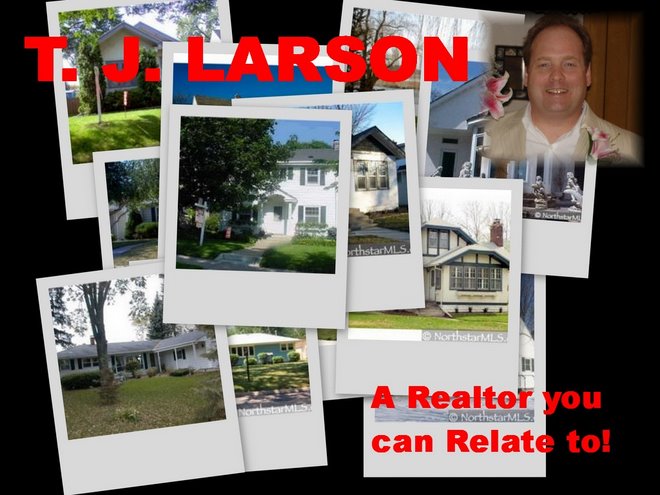The third-quarter house price index shows prices are up, down or steady, depending on where you live.
Is real estate heating up, cooling down, headed for a deeper freeze, or just hanging in there despite the challenges?
Pick your theory, as the latest federal report on home real estate price appreciation offers support for each scenario. The third-quarter "house price index" compiled by the Office of Federal Housing Enterprise Oversight examined changes underway in 275 of the largest U.S. markets.
Unlike other studies, the index survey tracks actual value shifts in millions of existing houses whose mortgages are owned or included in securities guaranteed by Fannie Mae or Freddie Mac.
Now to the four scenarios: Yes, real estate is heating up. You have to be in the right markets, of course, but there are several dozen hot spots spread nationwide. Take Bend, Ore., where house values appreciated at a stunning 30.7 percent during the 12 months ending Oct. 1, according to the survey. No dramatic bust or correction going on there. Or Myrtle Beach, S.C. (21.7 percent), Salt Lake City (20.4 percent) or El Paso, Texas (18.6 percent).
Overall, 37 metro markets saw average home appreciation rates of at least 15 percent during the 12 months covered by the survey, and 16 states had average gains above 10 percent. If that's not hot, it's at least warm -- exceptionally for a post-boom correction cycle. All these local markets continue to defy the gloom and doom predictions of the real estate bears.
The fastest-appreciating states for home prices this past year? Idaho (average 17.5 percent gain), Utah (17.4 percent), Oregon (16.9 percent) and Arizona (16.4 percent).
Everybody knows about the second scenario: Yes, real estate is cooling down. The third-quarter index documented that conclusively. The average appreciation rate for houses nationwide dropped to 0.86 percent during the quarter, or just 3.4 percent annualized. That's chillier than it has been since mid-1998. In five states -- Michigan, New York, Rhode Island, New Hampshire and Massachusetts -- the quarterly rate actually went slightly negative. It's unusual for an entire state to show net price depreciation for a quarter, but houses in economically hard-pressed Michigan slipped below zero for the entire 12 months of the study, depreciating by an average of 0.06 percent.
The deeper-freeze scenario? There's less hard evidence in the latest federal statistics, but some sobering trends appear in two categories of real estate markets: First are those areas where the regional economy has been struggling, where corporate layoffs and plant closings have pushed unemployment higher, and where there is little in the way of immediate relief in sight.
Examples include large swaths of the industrial Midwest -- Canton, Cleveland and Akron, Ohio, for instance, and Detroit -- each of which saw quarterly net depreciation slightly below 1 percent. Other areas fared even worse, such as Lima, Ohio, where the average house lost 3 percent of its market value during the quarter. Burlington, N.C., took the heaviest quarterly hit in the country -- 3.4 percent depreciation, an annualized 13.6 percent.
In the second category are the boom-era shooting stars where excess appreciation has burned itself out and prices are now flat at best: Half of all California markets saw quarterly declines in market values in the latest survey. San Diego and San Francisco both registered 0.2 percent depreciation for the quarter or nearly 1 percent on an annualized basis; Santa Rosa and Santa Barbara, Calif., and Sarasota, Fla., (all down 1.2 percent for the quarter, nearly 5 percent annualized); New York's Long Island counties of Nassau and Suffolk (0.7 declines), Boston (down 0.4 percent), and Barnstable, Mass. (2.1 percent decline).
Without question the most impressively documented scenario is that many large metro markets -- including some that experienced high gains during the boom years -- are still hanging in there and registering net appreciation, albeit at lower rates.
Examples include Fort Lauderdale (10.3 percent annualized quarterly gain), Naples, Fla. (10.8 percent), Los Angeles (7.4 percent), metropolitan Washington, D.C. (3 percent), New York City and its northern New Jersey suburbs (3 percent), Seattle (14.8 percent), Miami-Miami Beach (14.7 percent), Chicago (5.2 percent), Orlando (6.5 percent) and San Antonio (9.9 percent).
Twin Cities-area prices rose 0.06 for the quarter and 2.82 for the year.
The takeaway message from these seemingly contradictory patterns: Even in a general national cooling trend, the performances of individual local real estate markets are governed by the fundamentals of their own economies. There is no single scenario at work here.
But there is some positive news overall: In the words of Patrick Lawler, chief economist for the agency that produces the price index, "the transition from sizzling markets to normal or weak markets has been orderly so far, and recent drops in interest rates lessen the likelihood that precipitous changes will occur." (To see the full third-quarter house price index, go to www.ofheo.gov.)
Monday, December 11, 2006
Subscribe to:
Post Comments (Atom)


No comments:
Post a Comment